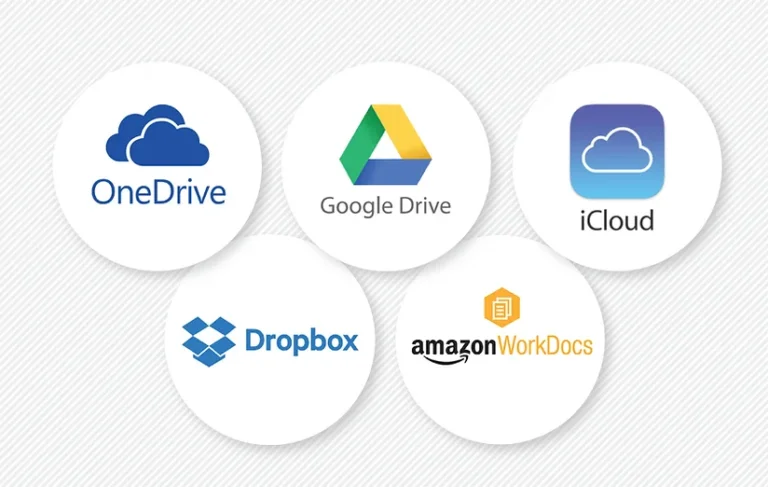Artificial Intelligence (AI) and Machine Learning (ML) have become buzzwords in today’s technological landscape, but what do they really mean?
This article will delve into the definitions of AI and ML, exploring the different types and applications of each.
We will also discuss the relationship between AI and ML, current trends in the industry, and future predictions for these advanced technologies.
From the integration of AI and ML in various industries to ethical considerations and regulatory measures, the future of AI and ML is both exciting and complex.
Key Takeaways:
What Is Artificial Intelligence (AI)?
Artificial Intelligence (AI) refers to the simulation of human intelligence processes by machines, especially computer systems.
AI has become an integral part of various industries, including healthcare, finance, retail, and manufacturing. In healthcare, AI is revolutionizing patient care with personalized treatment plans and predictive analytics. Financial institutions utilize AI for fraud detection and algorithmic trading, while retailers use it for customer recommendations and supply chain optimization.
- In manufacturing, AI enhances production processes through predictive maintenance and quality control.
- The impact of AI on technology is profound, pushing boundaries in areas such as autonomous vehicles, natural language processing, and computer vision.
Businesses leverage AI to streamline operations, improve decision-making, and enhance customer experiences. From chatbots to recommendation engines, AI-powered tools are reshaping how companies interact with their customers.
Definition of AI
The definition of Artificial Intelligence (AI) encompasses the development and implementation of algorithms and AI models to enable machines to perform cognitive tasks that typically require human intelligence.
This includes the process of machine learning, where AI systems learn from data, identify patterns, and make decisions with minimal human intervention. Deep learning, a subset of machine learning, utilizes neural networks to simulate how the human brain functions, enabling machines to recognize speech, images, and more complex tasks. These AI models are designed to improve over time through a feedback loop, enhancing their ability to adapt and make accurate predictions.
Types of AI
Different types of Artificial Intelligence (AI) include Composite AI, which combines multiple AI technologies to enhance performance, and Virtual Assistants that provide personalized assistance through AI-driven interactions.
Composite AI integrates capabilities from various AI paradigms such as machine learning, natural language processing, and computer vision to tackle complex problems more effectively.
On the other hand, Virtual Assistants leverage AI algorithms to offer seamless user experiences, performing tasks like scheduling appointments, answering queries, and even controlling IoT devices through voice commands.
These AI categories are revolutionizing industries ranging from customer service and healthcare to finance and transportation, bringing increased efficiency and convenience to daily operations.
What Is Machine Learning (ML)?
Machine Learning (ML) is a subset of Artificial Intelligence (AI) that focuses on the development of AI systems capable of learning and improving from data without explicit programming.
ML technology enables computers to learn patterns and make decisions with minimal human intervention, enhancing efficiency across various industries. The core principle of ML revolves around algorithms that iteratively learn from data to uncover hidden insights, predict outcomes, and make informed decisions. Through the continuous process of data analysis and pattern recognition, ML systems improve their performance over time, adapting to new information and refining their models. In this way, ML plays a crucial role in driving innovation, automating processes, and optimizing decision-making in complex environments.
Definition of ML
Machine Learning (ML) involves the use of algorithms and statistical models to enable computer systems to perform tasks and improve their performance based on data patterns.
These algorithms and models form the backbone of ML applications, allowing machines to learn from historical data and make predictions or decisions without being explicitly programmed. Through an iterative learning process,
Machine Learning
systems can adapt and improve their accuracy over time by identifying patterns, trends, and insights from vast amounts of data. Key components such as supervised learning, unsupervised learning, and reinforcement learning play crucial roles in training models to recognize complex patterns and relationships within data sets.
Applications of ML
Machine Learning (ML) finds applications in various fields such as deep learning for complex data analysis, process discovery for optimizing workflows, and predictive analytics for well-considered choices.
Deep learning, a subset of ML, is revolutionizing industries like healthcare, finance, and autonomous driving by enabling computers to learn from vast amounts of data and make complex decisions.
Process discovery using ML algorithms helps businesses streamline operations, identify bottlenecks, and improve overall efficiency by analyzing patterns in data collected from various systems.
Predictive analytics leverages ML models to forecast future trends, customer behavior, and potential risks, enableing organizations to make proactive strategies and customized offerings.”
What Is the Relationship Between AI and ML?
The relationship between Artificial Intelligence (AI) and Machine Learning (ML) lies in the fact that ML is a subset of AI, focusing on developing systems that can learn and improve from data.
AI acts as the overarching concept, encompassing various technologies, with ML being a specialized technique within it. In essence, ML enables machines to automatically learn and adapt without being explicitly programmed, thus enableing AI systems to evolve and enhance their functionalities. Through the iterative process of feeding data, training models, and adjusting algorithms, ML facilitates AI’s abilities in recognizing patterns, making predictions, and continuously refining decision-making processes.
What Are the Current Trends in AI and ML?
Current trends in Artificial Intelligence (AI) and Machine Learning (ML) include increased focus on Natural Language Processing (NLP), advancements in generative AI, and the integration of AI and ML in various industries.
One of the most notable advancements in NLP is the development of transformer models like GPT-3, which have revolutionized language understanding and generation. Generative AI, on the other hand, has made strides in creating realistic and creative content, from art to music. Industries such as healthcare are leveraging AI and ML for predictive analytics and personalized medicine, while finance is benefiting from fraud detection algorithms and risk management tools.
Integration of AI and ML in Various Industries
The integration of Artificial Intelligence (AI) and Machine Learning (ML in various industries encompasses the development of AI governance frameworks to ensure ethical and responsible AI implementations.
In the healthcare sector, AI and ML are revolutionizing patient care through predictive analytics for early disease detection, personalized treatment plans, and drug discovery. AI-powered chatbots provide immediate assistance to patients, improving healthcare accessibility and efficiency.
In the financial industry, AI algorithms analyze vast amounts of data to detect fraudulent activities, optimize investment strategies, and enhance customer experiences. AI’s predictive capabilities in predicting market trends and risks contribute significantly to well-considered choices processes. The integration of AI and ML in these sectors highlights the importance of robust ethical guidelines and governance to address data privacy concerns and mitigate biases.
Increased Use of Natural Language Processing (NLP)
The increased use of Natural Language Processing (NLP) in AI involves enhancing information security through advanced linguistic analysis and cognitive understanding of human language.
NLP has become a crucial component of AI systems, enabling machines to comprehend and generate human language, leading to more efficient and intelligent interactions between humans and computers. This technology has revolutionized how we interact with smart assistants, conduct online searches, and even detect and prevent cyber threats. By harnessing NLP’s capabilities, organizations can analyze vast amounts of textual data to extract valuable insights and trends, thereby improving decision-making processes and user experiences.
The use of NLP in AI has greatly enhanced the accuracy of sentiment analysis, chatbots, and language translation services, making them more responsive and tailored to individual users’ needs. As NLP algorithms continue to advance, they are increasingly capable of understanding context, emotion, and intent behind human language, paving the way for more sophisticated and personalized interactions in various applications.
Advancements in Neural Networks
Advancements in Neural Networks within AI and Machine Learning are revolutionizing cognitive analytics, enabling advanced data processing and pattern recognition capabilities.
This progress has propelled the field of data science into new frontiers, as Neural Networks are increasingly being utilized in various industries for tasks such as image and speech recognition, natural language processing, and autonomous driving systems. The evolution of deep learning algorithms has significantly enhanced the accuracy and efficiency of these networks, making them essential tools for complex data analysis. Researchers continue to push the boundaries of neural network architectures, exploring concepts like convolutional and recurrent neural networks to improve predictive modeling and decision-making processes.
Automation and Robotics
The intersection of Artificial Intelligence (AI) with Automation and Robotics is driving the adoption of Robotic Process Automation (RPA) in streamlining operations and enhancing efficiency.
In today’s dynamic business landscape, leveraging AI technologies like machine learning and natural language processing alongside robotics has revolutionized automation processes. Organizations are now able to automate repetitive tasks, reduce manual intervention, and increase accuracy through RPA implementations.
This convergence of AI with automation not only optimizes workflows but also fosters innovation by allowing teams to focus on more strategic initiatives. By utilizing AI-driven algorithms, businesses can achieve unparalleled levels of process optimization and efficiency gains.
Emphasis on Ethical AI Development
The emphasis on Ethical AI Development involves prioritizing AI governance, cybersecurity measures, and data privacy to ensure responsible and transparent AI implementations.
Ethical considerations play a critical role in shaping the future trajectory of artificial intelligence. This approach guides developers and organizations to embed moral principles and values into their AI systems, fostering trust and reliability among users. By incorporating ethical guidelines into AI development, stakeholders can mitigate potential risks and biases that may arise.
Effective AI governance frameworks provide regulatory structures, accountability mechanisms, and clear guidelines for the use of AI technologies, ensuring they align with ethical standards and legal requirements.
What Are the Future Predictions for AI and ML?
Future predictions for Artificial Intelligence (AI) and Machine Learning (ML) include growth in the AI job market, continued integration in various industries, and advancements in AI systems, particularly in healthcare applications.
As the demand for AI and ML professionals rises, the job market is expected to witness a surge in specialized roles such as AI engineers, data scientists, and AI ethicists. Companies across diverse sectors are recognizing the transformative potential of AI, leading to increased integration of AI technologies in their operations to drive efficiency and innovation.
Advancements in AI systems are likely to revolutionize the healthcare industry, enabling predictive analytics, personalized treatment plans, and improved patient outcomes. The significant role of AI in healthcare is seen in areas such as medical imaging, drug discovery, and patient diagnosis.”
Growth in AI and ML Job Market
The growth in the AI and ML job market is fueled by the emergence of Citizen AI roles, enabling non-experts to leverage AI tools and technologies for various applications.
This shift towards Citizen AI roles is transforming the job landscape, creating diverse opportunities across industries. Companies are increasingly seeking professionals with a range of AI skills, from data analysis to algorithm development, to meet the growing demand for AI-powered solutions.
The democratization of AI tools has also opened doors for individuals to upskill and reskill in this field. As more organizations integrate AI into their operations, the need for talent proficient in machine learning, natural language processing, and computer vision continues to rise.
The impact of AI skill development goes beyond traditional tech companies, as industries like healthcare, finance, and retail adopt AI-driven technologies. This trend underscores the importance of continuous learning and adaptation to stay competitive in the evolving job market influenced by AI and ML.
Continued Integration in Various Industries
The continued integration of AI and Machine Learning across industries involves leveraging wearable devices for data collection, analysis, and personalized user experiences.
In the healthcare sector, wearable devices are revolutionizing patient monitoring, enabling real-time data tracking for doctors and personalized treatment recommendations. This technology also enhances preventive healthcare, allowing early detection of health issues based on the collected data.
In the retail industry, AI and ML algorithms analyze customer behavior patterns captured through wearables to tailor marketing strategies and enhance the shopping experience. This data-driven approach not only improves customer satisfaction but also boosts sales through targeted promotions and product suggestions.
The integration of AI and Machine Learning in manufacturing processes optimizes production efficiency and quality control. Wearables equipped with AI-powered sensors can detect potential equipment failures in advance, minimizing downtime and reducing maintenance costs.
Potential for More Advanced AI Systems
The future holds the potential for developing more advanced AI systems that exhibit creativity, leveraging edge computing for real-time data processing and intelligent decision-making.
Edge computing offers a promising avenue for AI systems to enhance their speed and efficiency in processing vast amounts of data at the network’s edge, closer to where the data is generated. This proximity reduces latency and enables quicker responses, crucial for real-time decision-making scenarios.
Advancements in neural networks and deep learning algorithms are propelling AI towards greater levels of creativity by enabling machines to generate original content, such as art, music, and even writing, mimicking human-like creativity.
Ethical Considerations and Regulations
Addressing ethical considerations and regulations in AI development involves establishing robust AI governance frameworks, complying with data privacy laws, and fostering transparency in AI implementations.
Effective AI governance standards serve as a compass for organizations navigating the complex landscape of AI technology, ensuring that decisions are made ethically and responsibly. Within these frameworks, companies must adhere to data protection regulations that safeguard individuals’ privacy and prevent misuse of sensitive information. It is essential to prioritize transparency and accountability in AI practices, enabling stakeholders to understand how AI algorithms operate and make informed judgments about their applications.
Frequently Asked Questions
What are the current trends in artificial intelligence and machine learning?
Some of the top trends in artificial intelligence and machine learning include the rise of deep learning, the integration of AI and ML in various industries, the use of AI in data-driven decision making, the growth of natural language processing, the emergence of explainable AI, and the focus on ethical and responsible AI development.
How is deep learning impacting the field of artificial intelligence and machine learning?
Deep learning, a subset of machine learning, has revolutionized the field of artificial intelligence by allowing computers to learn from large datasets and make more accurate predictions. It has been particularly successful in areas such as image and speech recognition, natural language processing, and autonomous vehicles.
Which industries are incorporating artificial intelligence and machine learning into their operations?
Virtually every industry can benefit from the use of artificial intelligence and machine learning. Some of the most prominent examples include healthcare, finance, retail, manufacturing, and transportation. These technologies are being used to improve processes, automate tasks, and gain valuable insights from large amounts of data.
How is artificial intelligence and machine learning being used in data-driven decision making?
With the vast amount of data available today, artificial intelligence and machine learning are being used to extract valuable insights and make data-driven decisions. These technologies can analyze data at a much faster rate than humans, identify patterns and trends, and make predictions based on historical data.
What is the role of natural language processing (NLP) in artificial intelligence and machine learning?
Natural language processing is a subfield of artificial intelligence that focuses on enabling computers to understand, interpret, and generate human language. NLP has become increasingly important in the development of AI and ML applications, particularly in the areas of chatbots, virtual assistants, and sentiment analysis.
Why is there a growing emphasis on explainable AI and ethical AI development?
As the use of artificial intelligence and machine learning becomes more widespread, there is a growing concern about the potential negative impacts and biases of these technologies. Explainable AI aims to make the decision-making processes of AI systems transparent, while ethical AI development focuses on ensuring that these technologies are developed and used responsibly and ethically.





